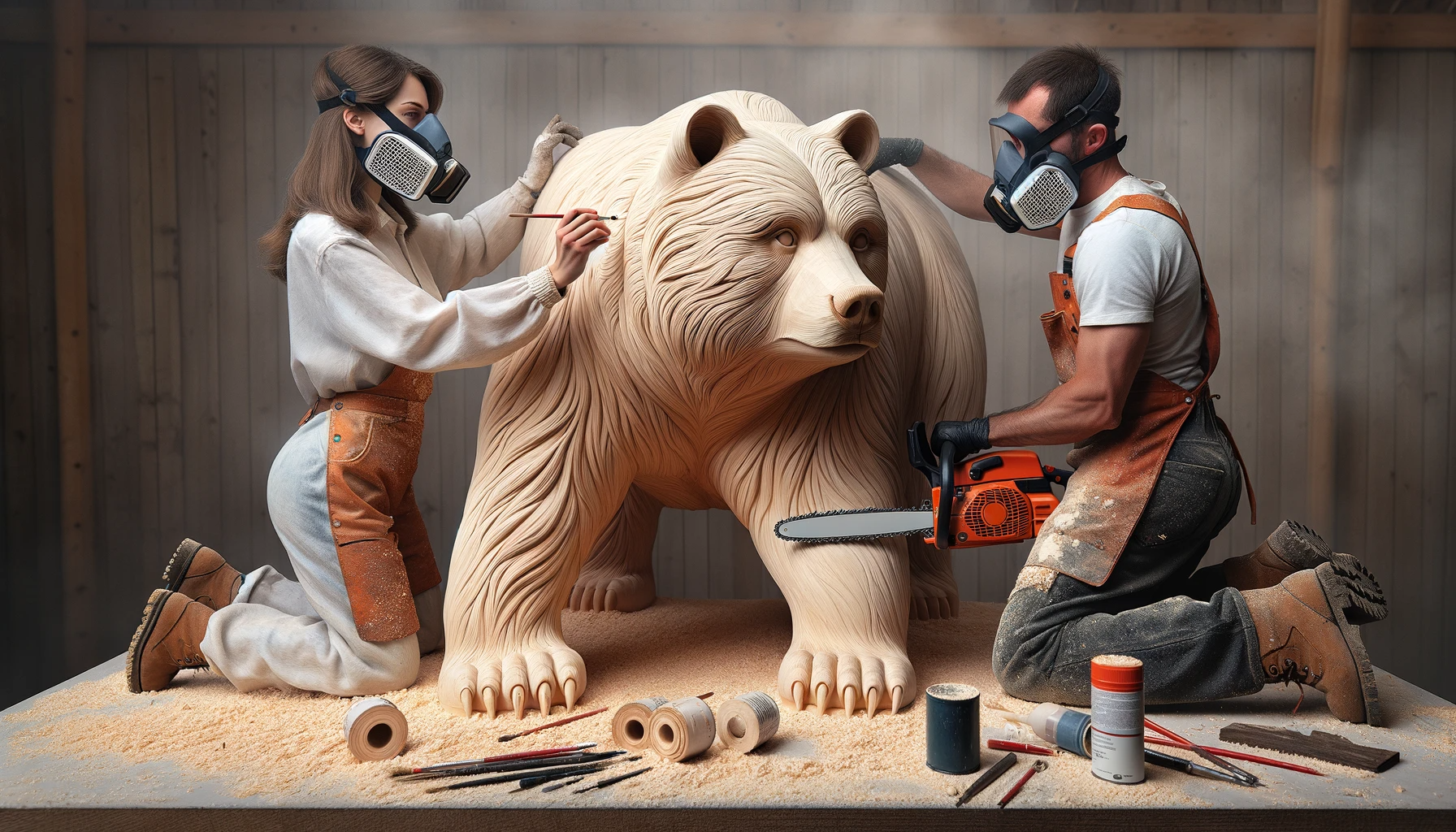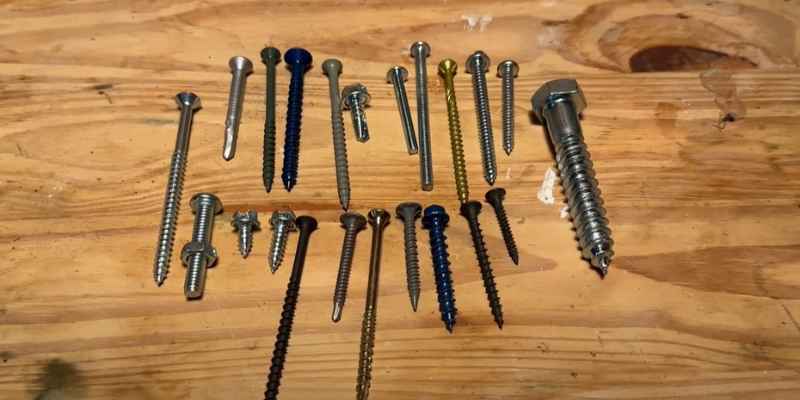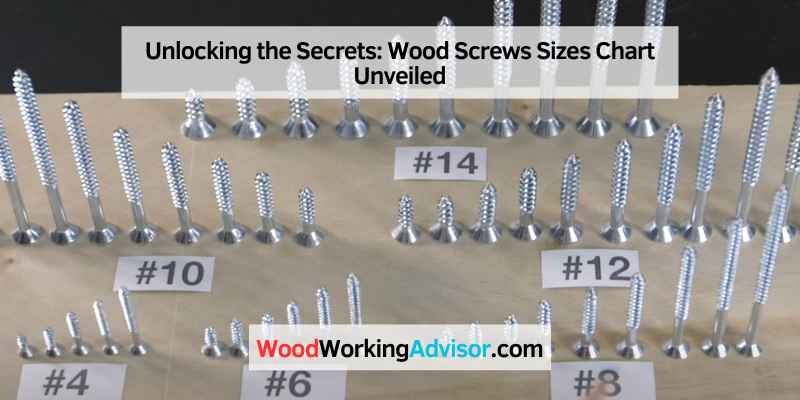The wood screws sizes chart provides a comprehensive guide for selecting the right screw for your woodworking projects. This chart includes the head type, diameter, length, and thread type of the screws, allowing you to make precise choices for your specific applications.
When choosing wood screws, it’s essential to consider the type of wood, the thickness of the material, and the weight load it will bear. By understanding the wood screws sizes chart, you can ensure proper fastening and secure connections in your woodworking projects.
This guide will help you navigate the variety of screw sizes and types available, making it easier to find the perfect fit for your needs. Whether you’re a beginner or experienced woodworker, having a good understanding of wood screws sizes will contribute to the success of your projects.
Different Types Of Wood Screws
When it comes to woodworking, choosing the right wood screws is crucial for the success of your project. The type and size of the screws you use can affect the strength, stability, and overall appearance of your woodwork. In this article, we will explore the different types of wood screws, including traditional wood screws, chipboard screws, and deck screws, and provide a comprehensive wood screws sizes chart to help you make informed choices for your woodworking projects.
Traditional Wood Screws
Traditional wood screws, also known as slotted screws, are designed for use in softwoods, plywood, and other materials. They feature a sharp, pointed tip that allows for easy penetration into the wood, and a coarse thread that provides excellent holding power. These screws come in various sizes ranging from #0 to #24, with larger numbers indicating thicker screws. When selecting traditional wood screws, it’s important to consider the length and gauge to ensure a secure and durable hold for your project.
Chipboard Screws
Chipboard screws are specifically designed for use in particle board, MDF, and other composite wood materials. These screws feature deep threads and a special design that allows them to grip the material securely without causing it to split. Chipboard screws are available in different lengths and diameters to accommodate various woodworking applications. When using chipboard screws, it’s essential to choose the correct size and length for the thickness of the material to achieve a strong and reliable connection.
Deck Screws
Deck screws are engineered for outdoor and high-moisture environments, making them ideal for decking, fences, and other exterior wood projects. These screws are made from corrosion-resistant materials such as stainless steel or coated carbon steel to withstand exposure to the elements. Deck screws feature a sharp, self-drilling point and coarse threads for easy installation and maximum holding power. When selecting deck screws, it’s important to consider the type of wood you are working with, as well as the environmental conditions to ensure long-lasting performance and stability.

Credit: medium.com
Wood Screw Anatomy
The anatomy of a wood screw is essential knowledge for anyone working with wood. Understanding the different parts and their functions can help ensure that the right screw is chosen for the job, leading to a secure and lasting hold. In this section, we will delve into the major parts of a wood screw and the importance of thread pitch and diameter.
Understanding Major Parts
The major parts of a wood screw include the head, shank, threads, and point. Each part plays a crucial role in the screw’s performance. The head is typically flattened or rounded, providing a surface for driving the screw with a tool. The shank is the main body of the screw, and the threads are the ridges along the shank, responsible for gripping the wood. The point, often sharp, aids in starting the screw into the wood.
Importance Of Thread Pitch And Diameter
Thread pitch and diameter are significant factors determining a wood screw’s holding strength and compatibility with different wood types. The thread pitch refers to the distance between threads and impacts how tightly the screw will hold in the wood. The diameter of the screw also influences its holding power, with larger diameters providing more stability and load-bearing capacity.
Deciphering Wood Screw Sizes
Wood screw sizes can be confusing to decipher, especially with the various markings and measurements used. Understanding how to read and differentiate between metric and imperial measurements is crucial in choosing the right screws for your woodworking projects. Let’s break down the key elements of wood screw sizes to make the selection process easier.
Reading Screw Size Markings
When looking at a wood screw, the size markings may include numbers, letters, or a combination of both. The most common notation for wood screw sizes includes a gauge number, length in inches, and sometimes a thread pitch. For example, a #8 1-1/4″ screw indicates it is a #8 gauge screw with a length of 1-1/4 inches.
Metric Vs. Imperial Measurements
Wood screws are available in both metric and imperial measurements. While metric screws are specified in millimeters, imperial screws are measured in inches. It’s essential to understand the differences between the two systems to ensure compatibility with your woodworking materials and tools.
| Measurement Type | Key Characteristics |
|---|---|
| Metric | – Specified in millimeters – Commonly used in European markets |
| Imperial | – Measured in inches – Widely used in the United States |
- Always check the manufacturer’s specifications for the correct screw size and type for your project.
- Consider the material and thickness of the wood when selecting the appropriate screw size.
By understanding how to read screw size markings and differentiating between metric and imperial measurements, you can confidently choose the right wood screws for your woodworking needs.
Choosing The Right Wood Screw
When working on a woodworking project, it is crucial to choose the right wood screw for the job. The correct screw ensures that your materials are securely joined together, preventing any potential damage or accidents. In this guide, we will explore the factors to consider before selecting a wood screw, including the wood thickness and weight-bearing capacities.
Considering Wood Thickness
One important aspect to consider when choosing the right wood screw is the thickness of the wood you are working with. Different wood thicknesses require screws of varying lengths and diameters to ensure a strong and secure connection. Using the wrong screw size can lead to a weak joint that might not withstand the weight or pressure it is subjected to.
For example, when working with thin boards or thinner pieces of wood, it is ideal to use shorter and thinner screws. These screws will provide enough grip without going through the other side of the wood. On the other hand, for thicker pieces of wood, longer and thicker screws will be needed to ensure a solid bond.
It is also important to take into account the type of wood being used. Softer woods like pine may require shorter screws, while hardwoods may need longer screws to penetrate properly and create a strong connection.
Weight-bearing Capacities
Weight-bearing capacities are another critical factor to consider when choosing wood screws. The capacity of a screw refers to the maximum amount of weight it can hold without causing any damage or failure to the joint.
The weight-bearing capacity of a screw is determined by factors such as the screw’s material, design, and size. Always ensure that the screw you select has a sufficient weight-bearing capacity to support the load that will be applied to the joint. Using a screw with a lower capacity may result in the joint loosening over time, leading to structural failures.
To determine the weight-bearing capacity of a screw, refer to the manufacturer’s specifications or consult a comprehensive wood screw sizes chart. These charts provide valuable information, including the recommended maximum weight that a particular screw size can support.
By considering wood thickness and weight-bearing capacities, you can choose the right wood screw that provides the necessary strength and security for your woodworking projects. Remember, using the appropriate screw size will ensure reliable and durable joints, preventing any potential mishaps or damages.
Practical Applications
Wood screws come in various sizes, and understanding their practical applications is essential for anyone involved in woodworking. Whether you are securing cabinets and furniture or embarking on outdoor construction projects, selecting the right wood screw size is crucial for ensuring durability and strength. In this blog post, we will explore the practical applications of wood screw sizes and how they can be used effectively in different scenarios.
Securing Cabinets And Furniture
One of the primary applications of wood screws is securing cabinets and furniture pieces. Whether you are assembling a new cabinet, fixing loose joints, or replacing damaged parts, choosing the appropriate wood screw size is vital for maintaining the structural integrity of your furniture. By referring to a wood screw sizes chart, you can identify the ideal length and diameter that will provide a secure grip while preventing the wood from splitting.
When securing cabinets and furniture, it is crucial to select screws with the right thread size and pitch. This ensures a tight and secure connection, preventing your furniture from wobbling or collapsing over time. Smaller screw sizes like #6 or #8 are commonly used for lightweight furniture, while larger sizes like #10 or #12 are ideal for heavier pieces that require increased support and stability.
Outdoor Construction Projects
Wood screws also play a significant role in outdoor construction projects, such as building decks, sheds, or pergolas. The use of wood screws ensures that the structures can withstand the elements and last for years to come. When working with exterior-grade lumber, it is essential to choose screws that are resistant to rust and corrosion.
For outdoor construction projects, wood screws with weather-resistant coatings like stainless steel or galvanized finish are highly recommended. These screws provide exceptional durability, making them suitable for applications exposed to moisture, humidity, and temperature fluctuations. Additionally, using wood screws with a larger diameter and length ensures a strong hold in pressure-treated or hardwood materials, enhancing the overall stability and longevity of your outdoor projects.
By referring to a wood screw sizes chart, you can easily determine the appropriate screw length and diameter required for your specific outdoor construction needs. Ensure your chosen screws are compatible with the materials you are using and have the necessary load-bearing capacity to support the weight they will bear.
Tips And Tricks
Exploring a wood screws sizes chart can be overwhelming without the right tips and tricks to guide you. Here are some essential pieces of advice to help you master the art of using wood screws effectively.
Pre-drilling Pilot Holes
A pre-drilling pilot hole is crucial for ensuring that your wood does not split when inserting a screw.
- Choose a drill bit slightly smaller than the diameter of your screw.
- Drill a hole that is the same depth as the length of the screw.
- Ensure the pilot hole is straight to prevent misalignment.
Countersinking For A Professional Finish
Countersinking is the process of creating a conical hole in the wood to allow the screw head to sit flush.
- Use a countersink bit to create a clean, professional finish.
- Test the depth of the countersink to ensure the screw head sits perfectly.
- Adjust the countersink depth for different screw sizes.

Frequently Asked Questions Of Wood Screws Sizes Chart
What Are The Different Wood Screw Sizes Available?
Wood screws are available in various sizes, including #6, #8, #10, and #12. These sizes refer to the screw’s diameter. The length of wood screws can vary, typically ranging from 1 inch to 6 inches or more, depending on the application.
Choose the appropriate size for your project to ensure a secure and sturdy connection.
How Do I Determine The Right Wood Screw Size For My Project?
To determine the right wood screw size, consider the material you are working with and the intended application. Generally, you should select a screw size that is roughly twice the thickness of the material you are fastening. Keep in mind the depth of the pilot hole and the type of wood you are using.
When in doubt, consult a wood screw size chart or seek advice from a professional.
Can I Use Any Type Of Wood Screw For Any Project?
While wood screws are generally versatile and can be used in a variety of woodworking projects, it is important to choose the right type of wood screw for your specific project. Factors to consider include the type of wood you are working with, the load-bearing requirements, and the desired aesthetic.
Consult a wood screw size chart to help you select the most appropriate screw for your needs.
What Is The Difference Between Flat Head And Countersunk Wood Screws?
Flat head wood screws have a flat top surface that sits flush with the wood, while countersunk wood screws have a tapered or beveled top surface that sinks into the wood, creating a recessed hole. The choice between flat head and countersunk wood screws depends on the desired finish and the level of visibility you want for the screw head.
Conclusion
To sum up the importance of understanding wood screw sizes, refer to this comprehensive chart. Choosing the right size is crucial for your woodworking projects’ success. Keep this resource handy for quick reference and achieve precision and efficiency in your screw applications.
Happy woodworking!


